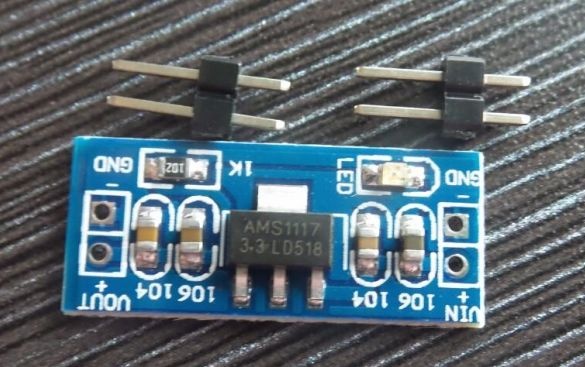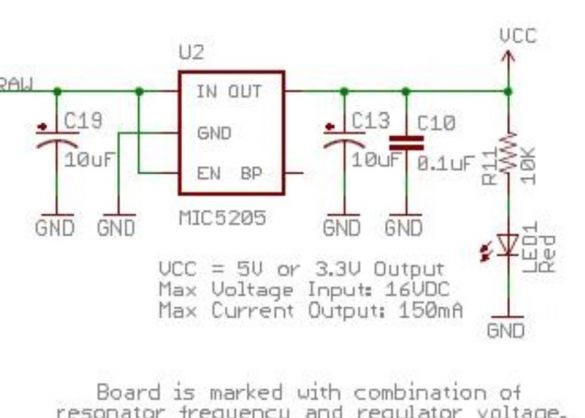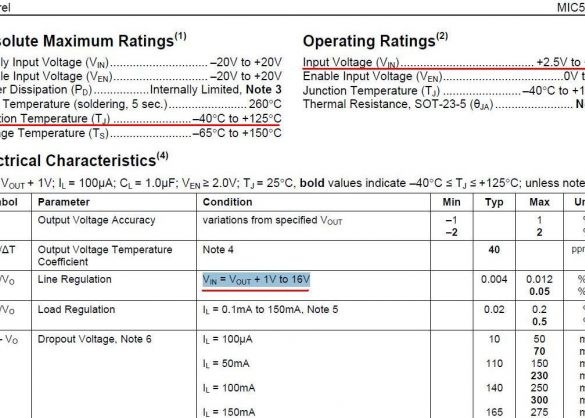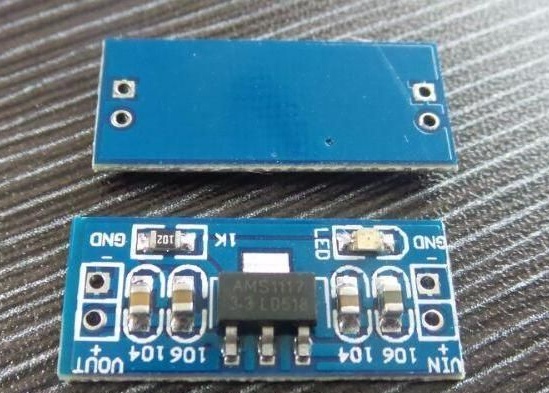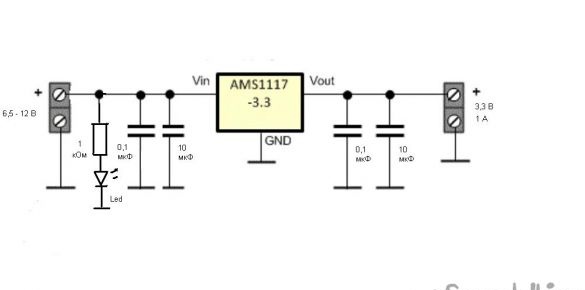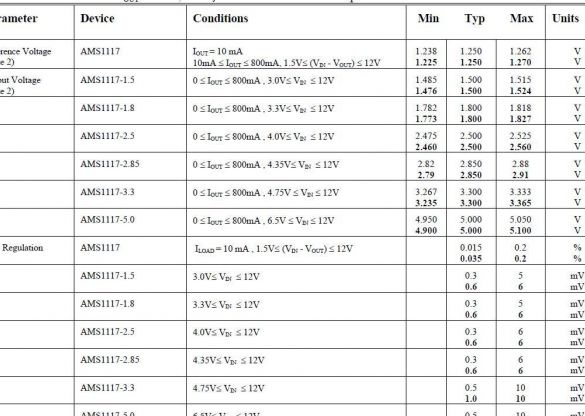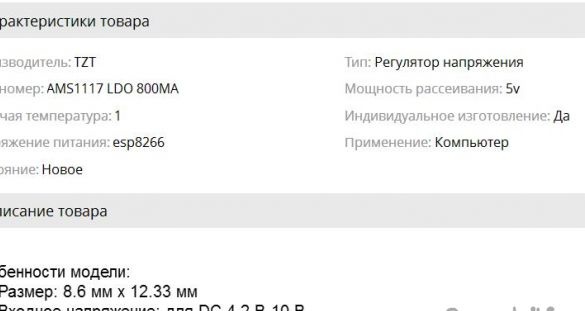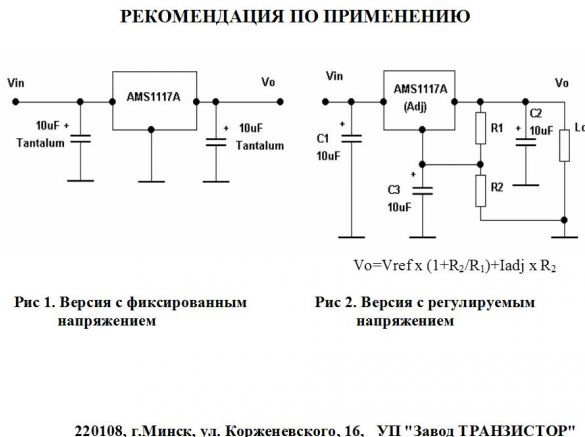Expanding DC-DC Power Module Arduino Pro mini.
I decided to reduce the size and cost of my home weather stations on GY-BMP280-3.3 and Ds18b20.
After thinking, I came to the conclusion that the Arduino Uno board is the most expensive and voluminous part of the weather station. The cheapest replacement option might be the Arduino Pro Mini. The Arduino Pro Mini is available in four versions. To solve my problem, an option with a Mega328P microcontroller and a supply voltage of 5 volts is suitable. But there is still an option for a voltage of 3.3 volts. How do these options differ? Let's figure it out. The fact is that the Arduino Pro Mini boards are equipped with an economical voltage regulator. For example, such as the MIC5205 with an output voltage of 5 volts. These 5 volts are fed to the Vcc pin of the Arduino Pro Mini, so the board will be called the “Arduino Pro Mini board with a 5-volt supply voltage." And if instead of the MIC5205 microcircuit another microcircuit with an output voltage of 3.3 volts will be supplied, then the board will be called "Arduino Pro Mini board with a supply voltage of 3.3 volts"
The Arduino Pro Mini can receive power from an external unstabilized power supply with a voltage of up to 12 volts. This power must be supplied to the RAW pin of the Arduino Pro Mini. But, having familiarized myself with the datasheet (technical document) on the MIC5205 chip, I saw that the range of power supplied to the Arduino Pro Mini board could be wider. Unless, of course, the MIC5205 chip is on the board.
Datasheet on the MIC5205 chip:
View online file:
The input voltage supplied to the MIC5205 chip can be from 2.5 volts to 16 volts. At the same time, the output of the standard inclusion circuit should have a voltage of about 5 volts without the declared accuracy of 1%. If we use the information from the datasheet: VIN = VOUT + 1V to 16V (Vinput = Voutput + 1V to 16V) and accepting Voutput as 5 volts, we get that the Arduino Pro Mini board's voltage supplied to the RAW pin can be from 6 volts up to 16 volts with an accuracy of 1%.
Datasheet on the MIC5205 chip:
To power the GY-BMP280-3.3 board for measuring barometric pressure and temperature, I want to use a module with the AMS1117-3.3 chip. The AMS1117 is a linear low voltage drop voltage regulator.
Photo module with AMS1117-3.3 chip:
Datasheets on the AMS1117 chip:
View online file:
View online file:
Scheme of the module with the AMS1117-3.3 chip:
I indicated on the circuit diagram of the module with the AMS1117-3.3 chip the input voltage is from 6.5 volts to 12 volts, basing this on the documentation for the AMS1117 chip.
The seller indicates an input voltage of 4.5 volts to 7 volts. Most interestingly, another seller on Aliexpress.com indicates a different voltage range - from 4.2 volts to 10 volts.
What is the matter? I think that manufacturers solder capacitors into the input circuits with a maximum allowable voltage less than the parameters of the microcircuit allow - 7 volts, 10 volts. And maybe they even put defective microcircuits with a limited range of supply voltages. What happens if I apply a voltage of 12 volts to the board I bought with the AMS1117-3.3 chip, I don’t know.
Perhaps to increase the reliability of the Chinese motherboard with the AMS1117-3.3 chip, it will be necessary to exchange ceramic capacitors with electrolytic tantalum capacitors. This switching circuit is recommended by the manufacturer of microcircuits AMS1117A, Minsk Plant Unitary Enterprise "Transistor Plant".
Datasheet on the AMS1117A chip:
View online file:
Enjoy the shopping!
Cost: ~ 23

